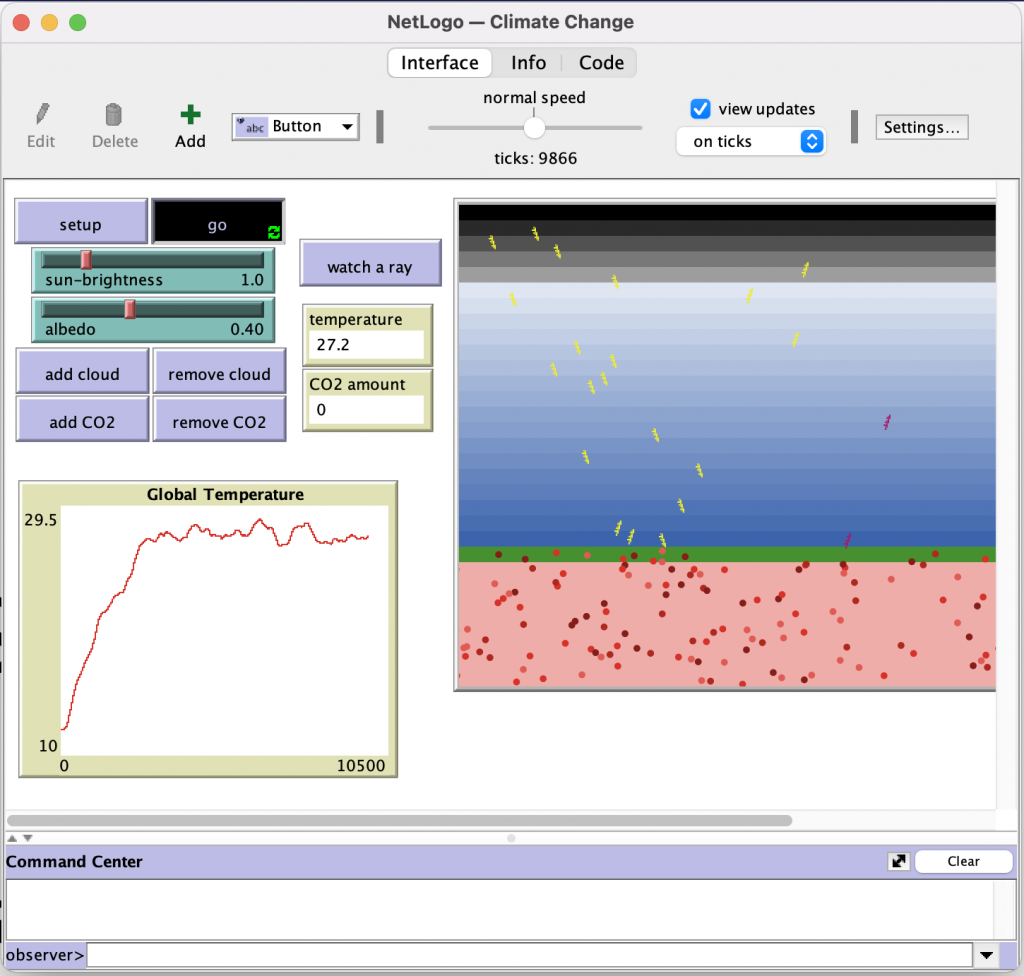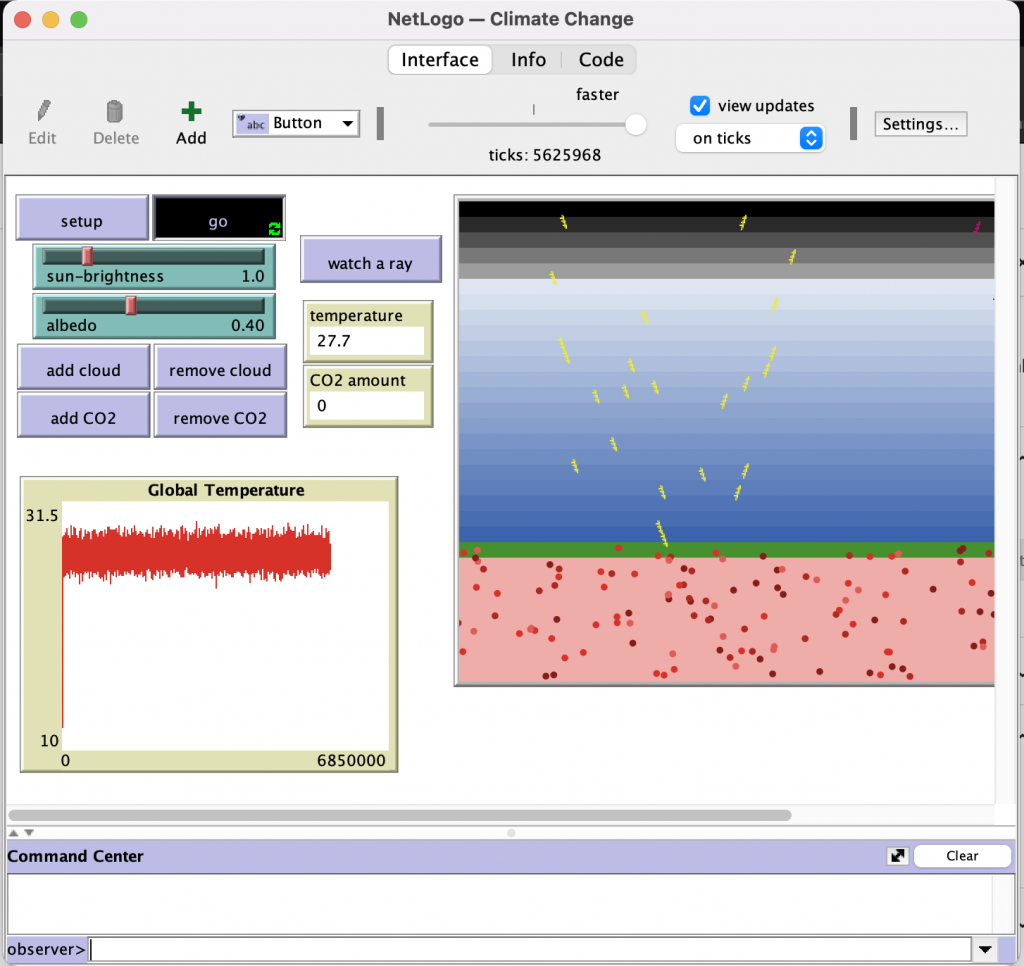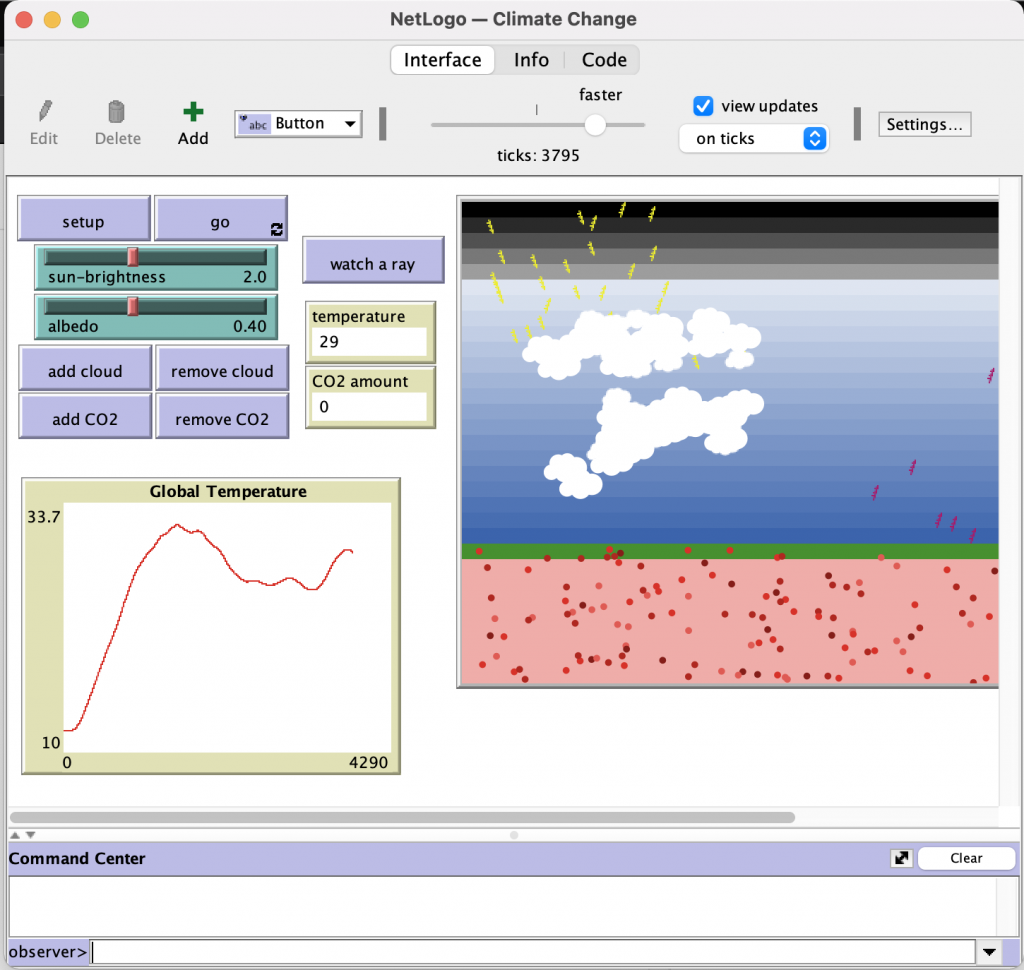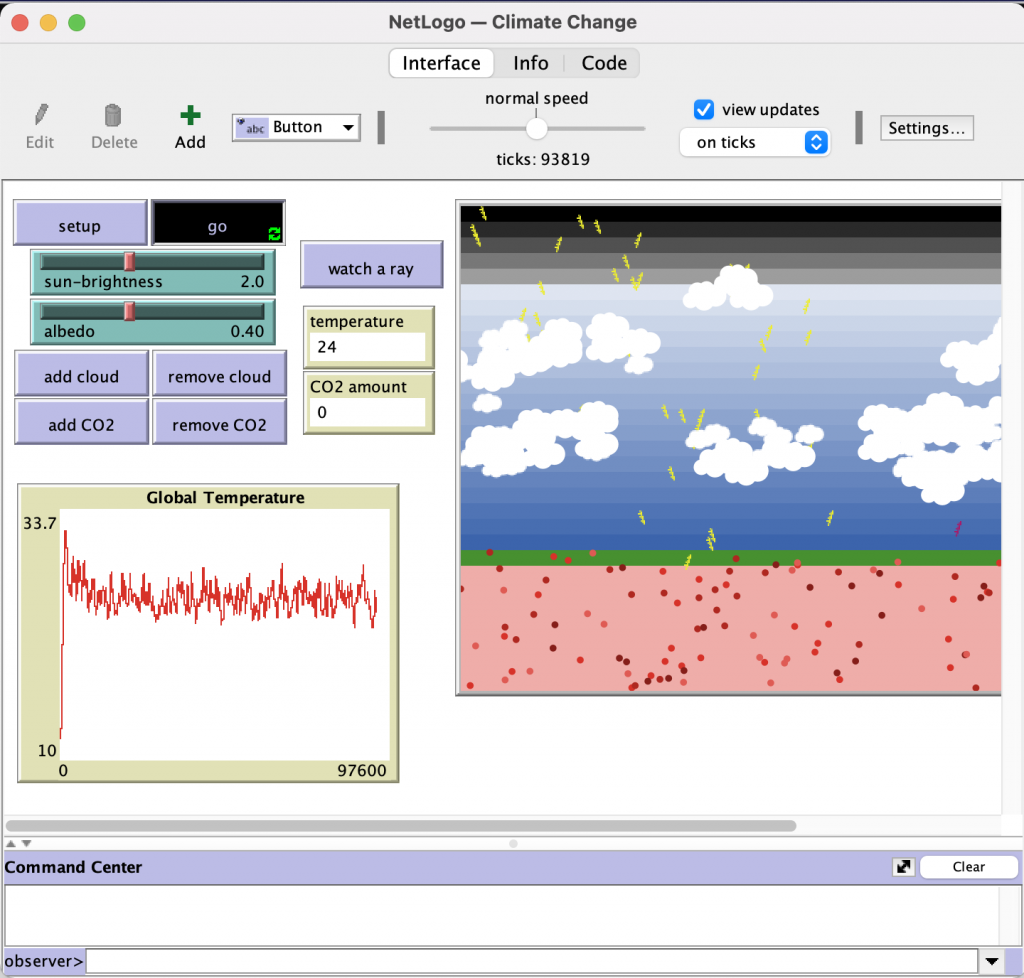
The Climate Change simulation sets up an AI ‘world’ of atmosphere, earth and space to which is then populated with CO2 particles. Whilst there is much discussion about ‘ideal world temperature’ Freedman (2018) that a warmer world and rate of change is not good for us a species, therefore in this simulation controlling the rate of change and observing the outcomes of increased CO2 & Clouds on the Global Temperature.
After several minutes, the simulation kept a steady temperature with nominal increases and decreases between 26 and 27.9 celsusis.

The User Interface allowed the acceleration making observation of fluctuation in the temperature easier The observation of the amount of sunrays (yellow dashes) turning into trapped infrared heat (red dots) with this configuration.
The world creation, formed of earth surface (pink), surface (green), atmosphere (blue) and space (black) are static consistent parts of the AI created with the ‘setup-world’ routine, demonstrating NetLogos simplicity but effectiveness in creating a world.
to setup-world
set sky-top max-pycor – 5
set earth-top 0
ask patches [ ;; set colors for the different sections of the world
if pycor > sky-top [ ;; space
set pcolor scale-color white pycor 22 15
]
if pycor <= sky-top and pycor > earth-top [ ;; sky
set pcolor scale-color blue pycor -20 20
]
if pycor < earth-top
[ set pcolor red + 3 ] ;; earth
if pycor = earth-top ;; earth surface
[ update-albedo ]
]
end
To demonstrate the AI in the simulation, the user takes on the role of a ‘director’ modifying the environment to create changes in the simulation. In this case, more clouds and intesinity of sun-brightness is increased.

It can be observerd the AI simulation is correctly interacting with the clouds as the sun’s rays bounce off the clouds, thus not being abosrebed into earth and returned into atmosphere to increase tempreture. This creates a temporary drop in tempreture which then starts again to increase.
We can see the AI interacting by identifying that it knows between the interaction of clouds and earth, in that when the rays hit the clouds, they bounce off right away, where as if they hit the earth, some are trapped and others refelected.
This is done thru the run-sunshine,reflect-rays-from-clouds and encounter earth routines.
to run-sunshine
ask rays [
if not can-move? 0.3 [ die ] ;; kill them off at the edge
fd 0.3 ;; otherwise keep moving
]
create-sunshine ;; start new sun rays from top
reflect-rays-from-clouds ;; check for reflection off clouds
encounter-earth ;; check for reflection off earth and absorption
end

It can be seen that the simulation shows increase of additional clouds and increased sun-brightness results in a higher frequency of climate change, which would generally be detrimental to us a species.
Conclusion
In this exploration of NetLogo and the Climate Change simulation I set out to explore how a world was created and interactions of components in it, with the AI exhibiting the absorption, reflection and escape of solar rays. The world can be seen to be quite a simple setup and the interaction between elements equally so, providing a useful demonstration of global warming simulation.
